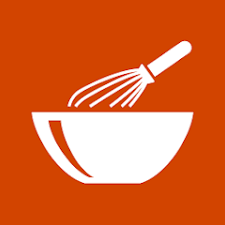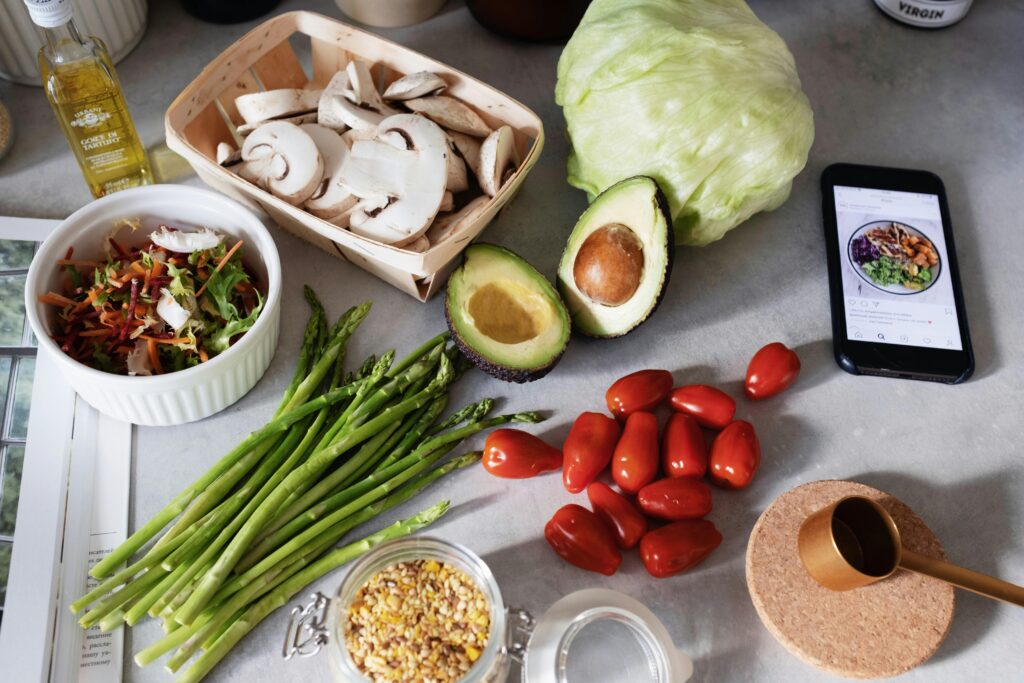Finding the right app to organize your recipes can make a big difference in how you plan meals, shop for groceries, and enjoy your time in the kitchen. Recipe Keeper has become a popular choice among home cooks for its simple interface and useful features. One common question for new users, however, is whether the free version of Recipe Keeper is enough or if upgrading to the paid version is a better move.
Understanding the differences between what you get for free and what you unlock with a purchase can help you decide if the investment matches your cooking and organizing needs. In this article, we’ll break down what’s included in the free version, what additional features the paid upgrade offers, and help you figure out which option makes the most sense for you.
We’ll also introduce ReciMe, a modern alternative for those who want an intuitive and flexible recipe management app. While Recipe Keeper provides a more traditional structure, ReciMe focuses on smart tools like automatic grocery lists and simple meal planning, giving home cooks even more ways to stay organized and save time.
For those exploring recipe management options beyond Recipe Keeper, ReciMe offers a fresh approach to how a modern recipe app should work. Designed with smart features and an intuitive interface, it eliminates complicated setups and steep learning curves, making recipe organization simple and efficient.


What Recipe Keeper Offers in Its Free Version
Recipe Keeper’s free version provides a solid foundation for anyone looking to start organizing their recipes digitally. It covers the basic needs of most casual home cooks, offering a simple and accessible way to store and view recipes without any upfront cost.
In the free version, users can manually enter recipes, including ingredients, instructions, and photos. It also allows for basic categorization, helping users group recipes by type such as breakfast, dinner, or desserts. Another useful feature is the ability to create shopping lists manually based on the recipes you save. This can be a helpful tool for keeping track of ingredients when preparing for grocery trips.
However, the free version has limitations. It supports a limited number of recipes (typically up to 20, depending on the platform), and while it allows importing recipes from websites, this feature is restricted compared to the paid version. Syncing across multiple devices is also not available, meaning your recipes will stay on one device unless you upgrade. For home cooks who need only a small, personal collection and do not mind manual entry, the free version can work well.
While the free version is a good starting point, those who cook frequently, plan meals regularly, or like to save recipes from online sources might find the basic features a bit restrictive over time.
What You Get With the Paid Version
Upgrading to the paid version of Recipe Keeper unlocks a much wider range of features designed to make recipe management more powerful and efficient. It removes many of the limitations found in the free version, offering tools that support regular cooking and larger recipe collections.
- Unlimited Recipe Storage: Save an unlimited number of recipes and build a complete, organized digital cookbook without worrying about storage limits.
- Web Importing: Import recipes directly from websites with just a few clicks, saving time and eliminating the need for manual copying and formatting.
- Multi-Device Syncing:
Access your recipe library across phones, tablets, and computers. Changes made on one device are automatically updated across all others, ensuring a seamless cooking and planning experience. - Advanced Organization: Create custom categories and add tags to better organize recipes. Group recipes by difficulty, preparation time, or other personal preferences for faster access and improved sorting.
- Improved Meal Planning and Grocery Lists: Plan meals more efficiently with advanced scheduling tools, including random meal plan generation based on your preferences. Generate shopping lists from selected recipes, with items automatically sorted by category and the ability to add all meal plan ingredients with a single tap for easier grocery trips.
- Overall Experience: The paid version turns Recipe Keeper into a more complete tool for home cooks who value streamlined organization, accessible planning, and time-saving features. Regular users will notice smoother workflows and a better cooking experience.
Key Differences Between Free and Paid Versions
Recipe Keeper offers two versions designed to meet different needs, depending on how much you cook and how organized you want your recipe collection to be.
Comparison Table: Recipe Keeper Free vs Paid
| Feature | Free Version | Paid Version |
|---|---|---|
| Recipe Storage Limit | Limited to around 20 recipes | Unlimited recipe storage |
| Manual Recipe Entry | Yes | |
| Web Recipe Import | Restricted | Import recipes directly from websites |
| Device Sync | No | Yes, across phones, tablets, and computers |
| Meal Planning Tools | Basic | Advanced tools including scheduling and random meal planning |
| Shopping Lists | Manual creation | Smart grocery lists |
| Cross-Platform Use | Single device only | Multi-platform access (requires separate purchase per platform) |
Free Version Overview
The free version provides access to basic features, allowing users to manually enter recipes, organize them in a simple way, and store everything on a single device. It is well-suited for those who only need to keep a small, personal recipe library and are comfortable working without web imports or advanced planning tools. This version is ideal for users who cook occasionally and want a straightforward, no-cost solution.
Paid Version Overview
The paid version offers a more comprehensive set of tools. One of the key advantages is the ability to save an unlimited number of recipes, making it possible to build a complete digital cookbook. It also includes a web import feature that lets users quickly save recipes from online sources, eliminating the need for manual copying and formatting.
Syncing Across Devices
Another important upgrade is multi-device syncing. With the paid version, recipes are accessible on different devices, and updates are synchronized automatically. This feature benefits users who plan meals on a computer but prefer cooking with a tablet or phone in the kitchen.
Enhanced Meal Planning and Grocery Lists
The paid version also improves meal planning, offering more flexible scheduling options. Users can create grocery lists based on multiple recipes, with items automatically sorted for easier shopping. Custom tags and categories allow for better organization, giving users greater control over how their recipe collections are structured.
Pricing Model
Recipe Keeper’s paid version is available as a one-time purchase per platform (e.g., iOS, Android, Windows, Mac), meaning no recurring subscription fees. However, separate purchases are required for each platform to enable syncing across devices, which may increase costs for multi-platform users.
Choosing the Right Version
The decision between free and paid depends on your cooking frequency, your need for digital organization, and your preference for convenience. For occasional use, the free version covers the basics. For more serious home cooks who want expanded functionality and flexibility, the paid version provides a more complete solution.

Is Upgrading Recipe Keeper Worth It
Deciding whether to upgrade to the paid version of Recipe Keeper depends on your cooking habits and organizational needs. Let’s break it down:
When the Free Version Is Enough
The free version can work well if you:
- Cook occasionally and do not need to store many recipes.
- Prefer manual entry and don’t mind creating shopping lists by hand.
- Use a single device for your recipe collection.
- Want a basic, no-cost solution without ongoing commitments.
For casual home cooks, these basic features may cover all the essentials without feeling limited.
When the Paid Version Makes Sense
Upgrading becomes a smart move if you:
- Cook frequently and want to save an unlimited number of recipes.
- Need a fast and reliable way to import recipes directly from websites.
- Use multiple devices and need automatic syncing across them.
- Plan meals regularly and want more advanced tools for organizing your cooking schedule.
- Value time-saving features like smart grocery list generation.
The one-time payment also provides peace of mind, giving you full access to premium features without dealing with monthly or annual subscription fees.
Conclusion
Choosing between the free and paid versions of Recipe Keeper depends largely on how involved you are in cooking and meal planning. The free version covers the basic needs of casual users, offering a simple space to store a limited number of recipes and create basic shopping lists. It works well for those who cook occasionally and do not require advanced tools or multi-device access.
For users who cook more frequently or manage larger recipe collections, the paid version provides significant advantages. Features like unlimited recipe storage, web importing, device syncing, and more advanced meal planning tools make it a valuable upgrade. The one-time payment structure also ensures long-term access without the need for ongoing fees.
At the same time, it is worth reflecting on your expectations from a recipe management app. If you are looking for a solution that offers a more modern and flexible experience, with smart grocery lists and a streamlined approach to meal planning, other options on the market may also be worth considering.
Ultimately, the decision comes down to how you cook, how much you plan, and what kind of organization fits best into your kitchen routine.
FAQs
What happens to your recipes if you upgrade?
When you upgrade to the paid version, all existing recipes remain intact. The upgrade simply unlocks additional features without affecting your saved data.
Is Recipe Keeper’s paid version a subscription?
No, the paid version is a one-time purchase per platform. Once you buy it, you gain permanent access to the upgraded features without recurring payments.
Can you transfer your recipes between devices?
Device syncing is available only in the paid version. It allows users to access and manage their recipes across multiple devices by connecting through cloud sync.
Is there a limit to the number of recipes in the free version?
Yes, the free version typically limits you to around 20 recipes, depending on the platform. Serious users who cook or save recipes regularly may quickly reach this limit.
Does Recipe Keeper allow meal planning?
Both free and paid versions offer meal planning, but the paid version provides more flexibility and better integration with shopping lists.
